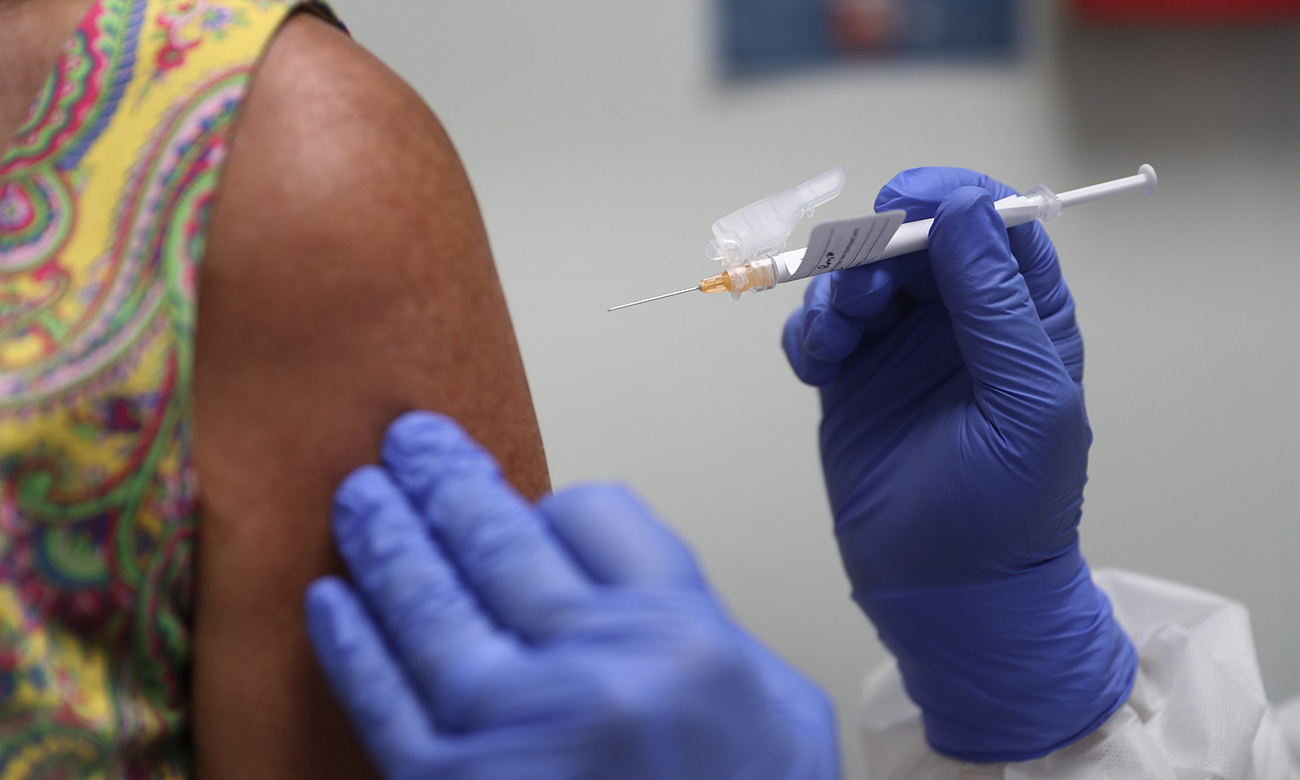
美國企業(yè)是極其慷慨的,。僅2020一年,就捐出近170億美元,,為解決從社會(huì)公平到藥物成癮等各種問題,,各大企業(yè)可謂殫精竭慮。然而,,盡管美國企業(yè)的慈善意識(shí)有目共睹,,這些捐贈(zèng)的實(shí)際成效卻有待商榷。要解決當(dāng)今社會(huì)的最大難題,,各公司需要一個(gè)更好的方案,。
美國企業(yè)做慈善的方式非常傳統(tǒng)。他們過度依賴傳統(tǒng)的企業(yè)基金會(huì):通過非營利組織向特定對(duì)象和邊緣群體提供資助,,或減免產(chǎn)品和服務(wù)費(fèi)用,。這種捐贈(zèng)雖然重要,但無法為解決包括貧困和經(jīng)濟(jì)不平等在內(nèi)的長期問題,,帶來其所需要的系統(tǒng)性變革,。這些問題只有通過長期創(chuàng)新,而非短期項(xiàng)目,,才能得到解決,。
因此,,各公司應(yīng)該采取一種新的非營利模式:一家從公司中分離出來的公共慈善機(jī)構(gòu)。它明顯區(qū)別于傳統(tǒng)的企業(yè)基金會(huì)的同時(shí),,在推動(dòng)系統(tǒng)性變革方面能夠擁有更加顯著的成效,。
筆者機(jī)構(gòu)所采用的這種新型非營利模式,源于以下認(rèn)知:公共慈善機(jī)構(gòu)比企業(yè)基金會(huì)擁有更多的靈活性,。按照規(guī)定,,公共慈善機(jī)構(gòu)的大部分捐款應(yīng)來自非企業(yè)渠道,這意味著更多的潛在資源,。它們可以自由地對(duì)前途無限的創(chuàng)新者進(jìn)行投資,,再利用所得回報(bào)進(jìn)行二次投資來加快進(jìn)程——而這正是企業(yè)基金會(huì)所要避免的。同時(shí),,公共慈善機(jī)構(gòu)可以利用創(chuàng)始企業(yè)的基礎(chǔ)設(shè)施及其員工的專業(yè)知識(shí),,獲得企業(yè)本身的好處。
綜合來看,,較于企業(yè)基金會(huì),,公共慈善機(jī)構(gòu)的運(yùn)營模式更接近于初創(chuàng)公司孵化器或種子投資者的運(yùn)營。他們可以很順利地投資那些需要較多資源或較長時(shí)限的初創(chuàng)企業(yè)和有前景的解決方案,。他們也更容易資助那些在傳統(tǒng)投資圈籍籍無名的創(chuàng)新者,。這種非傳統(tǒng)戰(zhàn)略對(duì)推動(dòng)社會(huì)問題的全面解決至關(guān)重要。
各公司如何才能做到這一點(diǎn)呢,?首先,,成立一家公共慈善機(jī)構(gòu),作為傳統(tǒng)企業(yè)基金會(huì)的替代或補(bǔ)充,。賦予它尋找和資助有前景的創(chuàng)新者和社會(huì)變革者的使命,,這些人可以從根源上幫助解決社會(huì)面臨的重大挑戰(zhàn)。
接下來,,讓你的員工參與其運(yùn)作,。他們可以向公共慈善機(jī)構(gòu)貢獻(xiàn)自己的時(shí)間和專業(yè)技能,使其能夠更有成效地資助有前途的創(chuàng)新項(xiàng)目,。這是公共慈善機(jī)構(gòu)與企業(yè)基金會(huì)的另一區(qū)別,基金會(huì)只能捐獻(xiàn)企業(yè)資金,,但無法提供企業(yè)員工所具備的專業(yè)知識(shí),。獨(dú)立的董事會(huì)可以杜絕企業(yè)內(nèi)的自我交易。
下一步,,是向企業(yè)外部募集捐贈(zèng)款項(xiàng)——這是成立一家公共慈善機(jī)構(gòu)的必備條件,。幸好,慈善家們有充足的理由支持非營利機(jī)構(gòu),。創(chuàng)始公司的資源及其員工的專業(yè)知識(shí)能為他們的捐款帶來增值,,使捐贈(zèng)者的資金發(fā)揮更大作用。由于投資能夠產(chǎn)生回報(bào)并帶來二次投資,隨著時(shí)間的推移,,他們的資助還會(huì)帶來更大的影響力,。
綜合以上一切,能為我們帶來什么,?為迫在眉睫的社會(huì)問題帶來突破性的解決方案,。變革者需要資金和商業(yè)知識(shí),但往往求助無門,,公共慈善機(jī)構(gòu)能夠在這方面為他們排憂解難,。對(duì)于社會(huì)創(chuàng)新一直以來的資助匱乏,意味著無數(shù)發(fā)展胎死腹中,。有了這種新型非營利模式,,它們終于有機(jī)會(huì)大展身手。
筆者的機(jī)構(gòu)可能是首個(gè)采用公共慈善模式的機(jī)構(gòu),。我們是由Roivant Sciences創(chuàng)立的一家技術(shù)驅(qū)動(dòng)的醫(yī)療保健公司,,致力于利用科技發(fā)展提高醫(yī)療保健的可及性,改善醫(yī)療資源匱乏群體的健康狀況,。醫(yī)療行業(yè)相關(guān)的企業(yè)基金會(huì)普遍推廣免費(fèi)或廉價(jià)的治療方法,,我們則專注于資助那些能夠?yàn)橥七M(jìn)健康公平作出長期貢獻(xiàn)的創(chuàng)新者。
以本機(jī)構(gòu)所資助的Sunflower Therapeutics為例,。該公司正在開發(fā)一種極具成本效益的方法,,用于欠發(fā)達(dá)國家的本土疫苗生產(chǎn)——這是健康公平的基本問題,也是大流行病后的迫切需求,。除了資金,,我們還為Sunflower提供商業(yè)知識(shí)。在我們這樣的公共慈善機(jī)構(gòu)的資助下,,Sunflower Therapeutics可以為全球疫苗的生產(chǎn)和獲得帶來根本性的變革,,這將為全球衛(wèi)生保健做出貢獻(xiàn),并將終結(jié)長期存在于全球大部分地區(qū)的不平等現(xiàn)狀,。
這種新型非營利模式幾乎適用于任何行業(yè),。銀行可以資助創(chuàng)新型金融科技初創(chuàng)公司,為那些無銀行賬戶或是不依賴銀行服務(wù)的非銀行用戶提供金融服務(wù),。房屋建筑公司可以資助新型制造工藝,,使住房更加經(jīng)濟(jì)耐用??萍脊究梢詳U(kuò)大消費(fèi)者對(duì)數(shù)字貨幣的使用,,風(fēng)靡全球的數(shù)字貨幣可以為美國少數(shù)群體賦權(quán)。這些非營利將需要遵守適用的州和聯(lián)邦慈善法規(guī),,并制定健全的籌款計(jì)劃,,以便續(xù)獲得來自創(chuàng)始公司以外的捐款,,從而保持其公共慈善機(jī)構(gòu)身份。
公共慈善機(jī)構(gòu)潛力無限,,但如果企業(yè)堅(jiān)持傳統(tǒng)的基金會(huì)模式,,這些潛力將無法得到釋放。久經(jīng)考驗(yàn)的傳統(tǒng)體系自有其存在價(jià)值,,但已不足以應(yīng)對(duì)大型挑戰(zhàn)和長期存在的不公平現(xiàn)象,。新的模式結(jié)合了營利性企業(yè)和非營利性公共慈善機(jī)構(gòu)的優(yōu)點(diǎn),能夠觸發(fā)系統(tǒng)性的變革,。美國企業(yè)還在等什么,?(財(cái)富中文網(wǎng))
林賽·安德羅斯基是 Raviant Social Ventures 的總裁兼首席執(zhí)行官,同時(shí)擔(dān)任麻省理工學(xué)院的理事,。
翻譯:劉瀟怡
美國企業(yè)是極其慷慨的,。僅2020一年,就捐出近170億美元,,為解決從社會(huì)公平到藥物成癮等各種問題,,各大企業(yè)可謂殫精竭慮。然而,,盡管美國企業(yè)的慈善意識(shí)有目共睹,,這些捐贈(zèng)的實(shí)際成效卻有待商榷。要解決當(dāng)今社會(huì)的最大難題,,各公司需要一個(gè)更好的方案,。
美國企業(yè)做慈善的方式非常傳統(tǒng)。他們過度依賴傳統(tǒng)的企業(yè)基金會(huì):通過非營利組織向特定對(duì)象和邊緣群體提供資助,,或減免產(chǎn)品和服務(wù)費(fèi)用,。這種捐贈(zèng)雖然重要,但無法為解決包括貧困和經(jīng)濟(jì)不平等在內(nèi)的長期問題,,帶來其所需要的系統(tǒng)性變革,。這些問題只有通過長期創(chuàng)新,而非短期項(xiàng)目,,才能得到解決,。
因此,各公司應(yīng)該采取一種新的非營利模式:一家從公司中分離出來的公共慈善機(jī)構(gòu),。它明顯區(qū)別于傳統(tǒng)的企業(yè)基金會(huì)的同時(shí),,在推動(dòng)系統(tǒng)性變革方面能夠擁有更加顯著的成效。
筆者機(jī)構(gòu)所采用的這種新型非營利模式,,源于以下認(rèn)知:公共慈善機(jī)構(gòu)比企業(yè)基金會(huì)擁有更多的靈活性,。按照規(guī)定,,公共慈善機(jī)構(gòu)的大部分捐款應(yīng)來自非企業(yè)渠道,,這意味著更多的潛在資源,。它們可以自由地對(duì)前途無限的創(chuàng)新者進(jìn)行投資,再利用所得回報(bào)進(jìn)行二次投資來加快進(jìn)程——而這正是企業(yè)基金會(huì)所要避免的,。同時(shí),,公共慈善機(jī)構(gòu)可以利用創(chuàng)始企業(yè)的基礎(chǔ)設(shè)施及其員工的專業(yè)知識(shí),獲得企業(yè)本身的好處,。
綜合來看,,較于企業(yè)基金會(huì),公共慈善機(jī)構(gòu)的運(yùn)營模式更接近于初創(chuàng)公司孵化器或種子投資者的運(yùn)營,。他們可以很順利地投資那些需要較多資源或較長時(shí)限的初創(chuàng)企業(yè)和有前景的解決方案,。他們也更容易資助那些在傳統(tǒng)投資圈籍籍無名的創(chuàng)新者。這種非傳統(tǒng)戰(zhàn)略對(duì)推動(dòng)社會(huì)問題的全面解決至關(guān)重要,。
各公司如何才能做到這一點(diǎn)呢,?首先,成立一家公共慈善機(jī)構(gòu),,作為傳統(tǒng)企業(yè)基金會(huì)的替代或補(bǔ)充,。賦予它尋找和資助有前景的創(chuàng)新者和社會(huì)變革者的使命,這些人可以從根源上幫助解決社會(huì)面臨的重大挑戰(zhàn),。
接下來,,讓你的員工參與其運(yùn)作。他們可以向公共慈善機(jī)構(gòu)貢獻(xiàn)自己的時(shí)間和專業(yè)技能,,使其能夠更有成效地資助有前途的創(chuàng)新項(xiàng)目,。這是公共慈善機(jī)構(gòu)與企業(yè)基金會(huì)的另一區(qū)別,基金會(huì)只能捐獻(xiàn)企業(yè)資金,,但無法提供企業(yè)員工所具備的專業(yè)知識(shí),。獨(dú)立的董事會(huì)可以杜絕企業(yè)內(nèi)的自我交易。
下一步,,是向企業(yè)外部募集捐贈(zèng)款項(xiàng)——這是成立一家公共慈善機(jī)構(gòu)的必備條件,。幸好,慈善家們有充足的理由支持非營利機(jī)構(gòu),。創(chuàng)始公司的資源及其員工的專業(yè)知識(shí)能為他們的捐款帶來增值,,使捐贈(zèng)者的資金發(fā)揮更大作用。由于投資能夠產(chǎn)生回報(bào)并帶來二次投資,,隨著時(shí)間的推移,,他們的資助還會(huì)帶來更大的影響力。
綜合以上一切,,能為我們帶來什么,?為迫在眉睫的社會(huì)問題帶來突破性的解決方案。變革者需要資金和商業(yè)知識(shí),,但往往求助無門,,公共慈善機(jī)構(gòu)能夠在這方面為他們排憂解難,。對(duì)于社會(huì)創(chuàng)新一直以來的資助匱乏,意味著無數(shù)發(fā)展胎死腹中,。有了這種新型非營利模式,,它們終于有機(jī)會(huì)大展身手。
筆者的機(jī)構(gòu)可能是首個(gè)采用公共慈善模式的機(jī)構(gòu),。我們是由Roivant Sciences創(chuàng)立的一家技術(shù)驅(qū)動(dòng)的醫(yī)療保健公司,,致力于利用科技發(fā)展提高醫(yī)療保健的可及性,改善醫(yī)療資源匱乏群體的健康狀況,。醫(yī)療行業(yè)相關(guān)的企業(yè)基金會(huì)普遍推廣免費(fèi)或廉價(jià)的治療方法,,我們則專注于資助那些能夠?yàn)橥七M(jìn)健康公平作出長期貢獻(xiàn)的創(chuàng)新者。
以本機(jī)構(gòu)所資助的Sunflower Therapeutics為例,。該公司正在開發(fā)一種極具成本效益的方法,,用于欠發(fā)達(dá)國家的本土疫苗生產(chǎn)——這是健康公平的基本問題,也是大流行病后的迫切需求,。除了資金,,我們還為Sunflower提供商業(yè)知識(shí)。在我們這樣的公共慈善機(jī)構(gòu)的資助下,,Sunflower Therapeutics可以為全球疫苗的生產(chǎn)和獲得帶來根本性的變革,,這將為全球衛(wèi)生保健做出貢獻(xiàn),并將終結(jié)長期存在于全球大部分地區(qū)的不平等現(xiàn)狀,。
這種新型非營利模式幾乎適用于任何行業(yè),。銀行可以資助創(chuàng)新型金融科技初創(chuàng)公司,為那些無銀行賬戶或是不依賴銀行服務(wù)的非銀行用戶提供金融服務(wù),。房屋建筑公司可以資助新型制造工藝,,使住房更加經(jīng)濟(jì)耐用??萍脊究梢詳U(kuò)大消費(fèi)者對(duì)數(shù)字貨幣的使用,,風(fēng)靡全球的數(shù)字貨幣可以為美國少數(shù)群體賦權(quán)。這些非營利將需要遵守適用的州和聯(lián)邦慈善法規(guī),,并制定健全的籌款計(jì)劃,,以便續(xù)獲得來自創(chuàng)始公司以外的捐款,從而保持其公共慈善機(jī)構(gòu)身份,。
公共慈善機(jī)構(gòu)潛力無限,,但如果企業(yè)堅(jiān)持傳統(tǒng)的基金會(huì)模式,這些潛力將無法得到釋放,。久經(jīng)考驗(yàn)的傳統(tǒng)體系自有其存在價(jià)值,,但已不足以應(yīng)對(duì)大型挑戰(zhàn)和長期存在的不公平現(xiàn)象。新的模式結(jié)合了營利性企業(yè)和非營利性公共慈善機(jī)構(gòu)的優(yōu)點(diǎn),能夠觸發(fā)系統(tǒng)性的變革,。美國企業(yè)還在等什么,?(財(cái)富中文網(wǎng))
林賽·安德羅斯基是 Raviant Social Ventures 的總裁兼首席執(zhí)行官,同時(shí)擔(dān)任麻省理工學(xué)院的理事,。
翻譯:劉瀟怡
Corporate America is exceedingly generous. With nearly $17 billion in donations in 2020 alone, businesses are working hard to address everything from equity to education to addiction. Yet while it’s undeniable that corporate America is philanthropically minded, it’s highly questionable whether all this giving is truly effective. Businesses need a better way to tackle society’s biggest problems.
When it comes to philanthropy, businesses take a traditional approach. They lean heavily on traditional corporate foundations: nonprofits through which they dole out grants to specific causes and marginalized communities, or provide free or reduced-price products and services. While this giving matters, it can’t drive the systemic change that’s needed to address long-standing issues like poverty or economic inequity. Such problems can be solved only by long-term innovation, not short-term programs.
That's why businesses should adopt a new nonprofit model: a public charity spinout from a corporation. It’s significantly different from traditional corporate foundations and exponentially more effective at driving systemic change.
This new nonprofit model, which my organization has adopted, springs from the realization that public charities have more flexibility than corporate foundations. Public charities are required to receive most donations from noncorporate sources, which means potentially greater resources. They are free to invest in promising innovators and reinvest the returns to spur faster progress—something corporate foundations avoid. At the same time, a public charity can draw on the expertise and infrastructure of the founding company and its employees, giving it the benefits of the business itself.
Add it all up, and public charities can operate more like a corporate startup incubator or seed investor than a corporate foundation. They can easily invest in startups and promising solutions that require more resources or a longer time frame. They can also more easily support innovators who are not well-known in traditional investor circles. This outside-the-box strategy is key to driving comprehensive solutions to society-wide problems.
How can a business make this happen? First, establish a public charity, either instead of or in addition to a traditional corporate foundation. Give it a mission of finding and investing in promising innovators and social changemakers who can tackle the root causes of major social challenges.
Next, get your employees involved in its work. They can donate their time and professional expertise to the public charity, empowering it to support promising innovations far more effectively. That’s another difference from a foundation, which doles out corporate money but not the subject mastery of a corporate workforce. An independent board can ensure there’s no corporate self-dealing.
The next step is to solicit donations from outside the business—a requirement for a public charity. Fortunately, philanthropists have a good reason to support this nonprofit. Their donations are amplified by the founding company’s resources and employee expertise, exceeding the impact that donor dollars would otherwise make. They can also watch their support grow more powerful over time, as investments generate returns and get reinvested.
Add it all up, and what do you get? Groundbreaking solutions to pressing social problems. The public charity gives changemakers the funding they need but often can’t find, as well as the business expertise they want but often don’t have. Historic lack of support for social innovation means that countless advances have never seen the light of day. With this new nonprofit model, they finally have the chance to shine.
My organization is potentially the first to adopt the public charity model. We were stood up by Roivant Sciences, a technology-driven health care company, and our mission is to use technological advances to expand health care access and improve health outcomes for underserved groups. While typical health care–related corporate foundations facilitate free or cheap therapeutics, we focus on supporting innovators who can advance health equity over the long run.
Consider Sunflower Therapeutics, which my organization supports. It is developing a cost-effective means of manufacturing vaccines locally in less developed countries—a basic matter of health equity and an urgent need coming out of the pandemic. In addition to funding, my organization provides Sunflower with corporate expertise. With a public charity like ours supporting it, Sunflower Therapeutics could fundamentally change how the world makes and gets vaccinations, which will protect health globally and end long-standing inequities in large parts of the world.
This new nonprofit model could be applied to virtually any industry. A bank could support innovative fintech startups that expand access to the financial system for the unbanked or underbanked. A homebuilding business could invest in new manufacturing processes that make homes more affordable or more durable. Tech companies could expand consumer access to digital currency, which is being embraced globally and can empower minority communities in America too. Such nonprofits will need to comply with applicable state and federal charitable rules, and also develop a robust fundraising plan for substantial, ongoing donations beyond their founding companies, in order to maintain public charity status.
The possibilities are vast, yet they won’t be unleashed if companies stick with the traditional corporate foundation model. That tried-and-true system has its purposes, but it’s insufficient for tackling massive problems and ending long-standing injustice. A new model can spark systemic change, one that combines the best of for-profit businesses with the benefits of nonprofit public charities. What is corporate America waiting for?
Lindsay Androski is president and CEO of Roivant Social Ventures and a trustee of the Massachusetts Institute of Technology.






